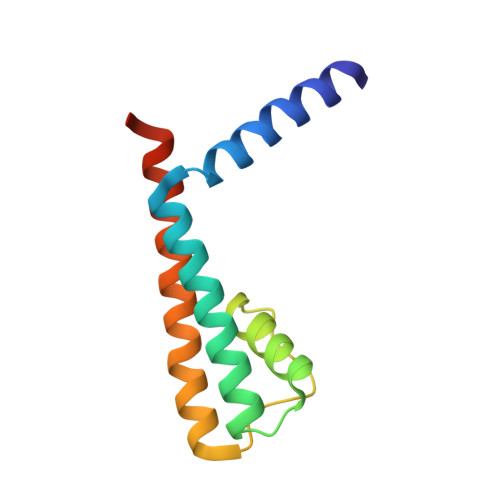Atomic structure of a Na+- and K+-conducting channel.
Shi, N., Ye, S., Alam, A., Chen, L., Jiang, Y.(2006) Nature 440: 570-574
- PubMed: 16467789
- DOI: https://doi.org/10.1038/nature04508
- Primary Citation of Related Structures:
2AHY, 2AHZ - PubMed Abstract:
Ion selectivity is one of the basic properties that define an ion channel. Most tetrameric cation channels, which include the K+, Ca2+, Na+ and cyclic nucleotide-gated channels, probably share a similar overall architecture in their ion-conduction pore, but the structural details that determine ion selection are different. Although K+ channel selectivity has been well studied from a structural perspective, little is known about the structure of other cation channels. Here we present crystal structures of the NaK channel from Bacillus cereus, a non-selective tetrameric cation channel, in its Na+- and K+-bound states at 2.4 A and 2.8 A resolution, respectively. The NaK channel shares high sequence homology and a similar overall structure with the bacterial KcsA K+ channel, but its selectivity filter adopts a different architecture. Unlike a K+ channel selectivity filter, which contains four equivalent K+-binding sites, the selectivity filter of the NaK channel preserves the two cation-binding sites equivalent to sites 3 and 4 of a K+ channel, whereas the region corresponding to sites 1 and 2 of a K+ channel becomes a vestibule in which ions can diffuse but not bind specifically. Functional analysis using an 86Rb flux assay shows that the NaK channel can conduct both Na+ and K+ ions. We conclude that the sequence of the NaK selectivity filter resembles that of a cyclic nucleotide-gated channel and its structure may represent that of a cyclic nucleotide-gated channel pore.
- Department of Physiology, University of Texas Southwestern Medical Center, Dallas, Texas 75390-9040, USA.
Organizational Affiliation:


















